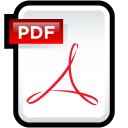Is this the biggest colour issue face by printers?
Well, there are many colour management issues, but the one that comes up time and again, even from printers with a good colour managed workflow, is the management of colour within PDFs supplied by their clients. 
This area can cost printers hundreds of hours and tens of thousands of pounds in unrecovered costs per year.
Often these will have RGB images and/or CMYK images, profiled and un-profiled, for the wrong printing condition for the press and substrate!
These images with the PDF will need to be converted to match the printers colour management policy for coated and uncoated papers in order to maximise image quality, printability and to avoid drying finishing issues due to incorrect separations resulting in excessive TAC (Total Area Coverage of ink).
So what are the solutions to this issue?
Ideally by encouraging, informing and training clients to produce PDFs to the printers colour management policy and PDFs specifications. Making the Adobe CS/CC color settings file (‘csf) and ICC profiles available to clients together with Acrobat job options files (.joboptions) to produce PDF X 1a or if you wish to keep transparency live PDF X4 files.
In the case of PDF X4 it is best at present to specify a CMYK (plus spot colours) version based on your colour management policies for coated and uncoated papers.
Most computer to plate workflows have colour management tools. However often they are set by default, to perform a basic RGB to CMYK conversions. The preferences may not be optimal, with menus set to ignore embedded RGB profiles and convert to a less than ideal CMYK ICC profile for coated and uncoated papers. CMYK images in the workflow are often not changed. Not good when printing on uncoated or specialist stocks!
The CMYK conversion issue is the most difficult as, most colour management specialists do not advise converting CMYK to other CMYK profiles using the ‘standard’ profile conversion approach as used by Abode Photoshop where the input CMYK image is first converted into the Lab colour space, and then to the new CMYK profile.
This method can result in less then optimal conversions resulting in four colour blacks and other issues with pure colours.
Most colour management experts and software vendors recommend using device link profiles (DLP) that link two CMYK profiles together within the one devise link profile. This ensures black channel integrity and pure CMYK primaries. However this results in the need for a DLP profile for each combination of CMYK profiles.
This can result in a very large number of workflows within CtP systems that support devise link profiles.
Another option is to use a specialised colour management server based software to correct the PDFs for colour issues before the CtP workflow. These include Alwan ColorHub, GMG ColorServer, ColorLogic GmbH ZePrA and CGS ORIS range of products.
These can be combined within an PDF pre-flight software, such as Enfocus Pitstop or CallaspdfToolbox to correct ‘structural’ issues with a PDF.
These pre-flight software’s do offer some colour management tools, but again the CMYK to CMYK area is limited in a similar way to the CtP workflows.
These all work using DLP, either by having a large library of these profiles to cover most CMYK to CMYK conversions, or the ability, in the case of Alwan and ColorLogic, to generate DLP ‘on the fly’ by reading the input CMYK profile and creating a DLP to the chosen output CMYK profile.
This makes a very powerful colour management workflow, as any CMYK image will be accurately processed to the required CMYK printing condition. RGB images are converted using the standard ICC method to the chosen CMYK.
Most of these systems also offer ink savings, either by using CMYK profiles with lower TAC and strong GCR, or applying these setting to a workflow using more ‘standard’ CMYK profiles.
So what to do?
Of course getting correct PDFs is the best option, so advising your clients in this area is a positive action to which many clients will respond well. Review the issue you have with PDF on a client-by-client basis. Look at the number of hours spent correcting clients PDFs. Are they all chargeable? If so, how many are actually invoiced?
As stated at the start of this blog, this area can cost printers hundreds of hours and tens of thousands of unrecovered pounds a year.
Based on the 20%/80% rule, it is likely that 80% of the poor PDFs will come from 20% of your clients. So offer these clients advice and training for their graphic designers, both internal and external.
However if your client base and market does not see this as a positive step, what then? Firstly check your CtP workflows to ensure they are optimal for your colour management needs. Talk to your CtP workflow vendor about this issue, especially the CMYK to CMYK profile conversions.
Finally, Investigate if a server based, colour management solution is needed to solve these CMYK to CMYK conversion issues for your clients and market.
Twitter
- Paul Sherfield who runs the consultancy is well known in the printing and pre-media industry as having considerable knowledge on digital workflows, with a special expertise on the business reasoning behind such systems.
He has installed some of the most successful digital pre-press and pre media systems in the UK. For 2 years he worked on a number of medium term projects before starting the consultancy in July 2000. Before this he was a partner in what became one of the leading pre-press/printing companies in London.
He is active in a number of industry groups including the BPIF Technical Standards Committee, ISO TC 130 printing standards committees and is chair of the BPIF steering group for ISO 12647/2 UK certification, He is a regular speaker at seminars and conferences.



